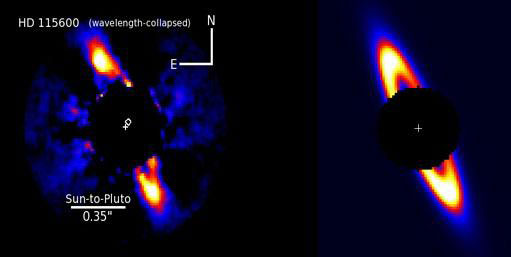 Astronomers have discovered a disc of planetary debris surrounding a young sun-like star that shares remarkable similarities with the Kuiper Belt that lies beyond Neptune, and may aid in understanding how our solar system developed.
Astronomers have discovered a disc of planetary debris surrounding a young sun-like star that shares remarkable similarities with the Kuiper Belt that lies beyond Neptune, and may aid in understanding how our solar system developed.
May 27th, 2015
Read more
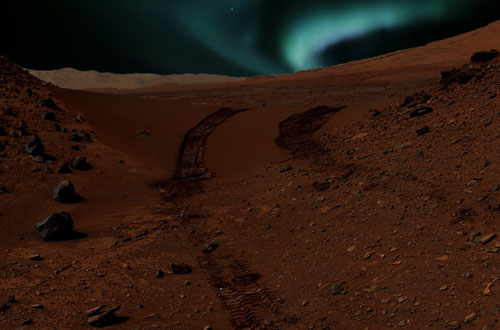 An international team of researchers has for the first time predicted the occurrence of aurorae visible to the naked eye on a planet other than Earth.
An international team of researchers has for the first time predicted the occurrence of aurorae visible to the naked eye on a planet other than Earth.
May 27th, 2015
Read more
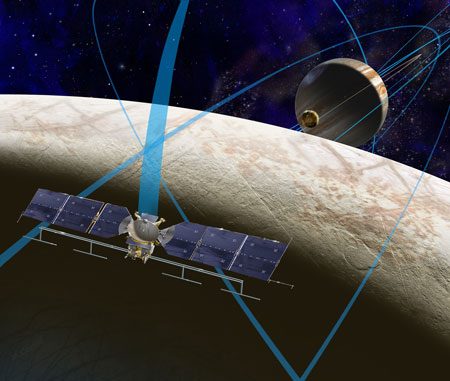 Great honour for Nicolas Thomas from the University of Berne: The scientist was selected as part of the imaging team for NASA's Europa Clipper mission. The mission will help to answer the question whether there is life in the oceans of Jupiter's moon, Europa.
Great honour for Nicolas Thomas from the University of Berne: The scientist was selected as part of the imaging team for NASA's Europa Clipper mission. The mission will help to answer the question whether there is life in the oceans of Jupiter's moon, Europa.
May 27th, 2015
Read more
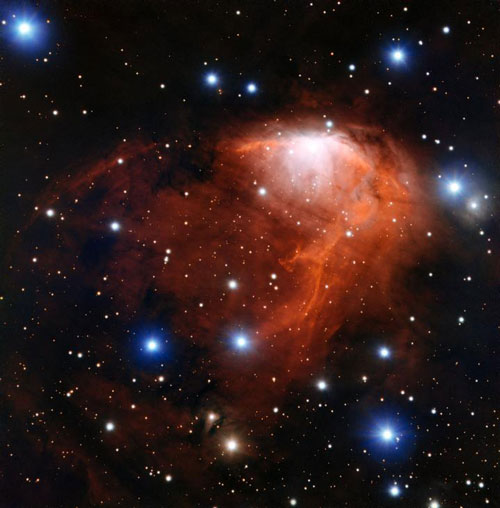 In the brightest region of the nebula RCW 34, gas is heated and expands through the surrounding cooler gas. Once the heated hydrogen reaches the borders of the gas cloud, it bursts outwards into the vacuum like the contents of an uncorked champagne bottle - this process is referred to as champagne flow. But the young RCW 34 has more to offer; there seem to have been multiple episodes of star formation within the same cloud.
In the brightest region of the nebula RCW 34, gas is heated and expands through the surrounding cooler gas. Once the heated hydrogen reaches the borders of the gas cloud, it bursts outwards into the vacuum like the contents of an uncorked champagne bottle - this process is referred to as champagne flow. But the young RCW 34 has more to offer; there seem to have been multiple episodes of star formation within the same cloud.
May 27th, 2015
Read more
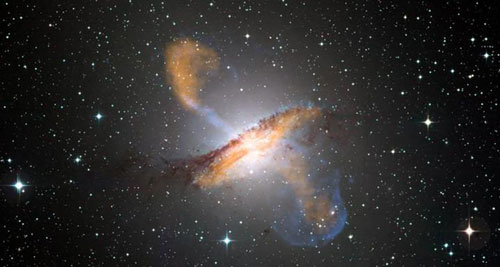 Supernovas just might be the maid service of the universe. It seems these explosions that mark the end of a star's life work hand-in-hand with supermassive black holes to sweep out gas and shut down galaxies' star-forming factories.
Supernovas just might be the maid service of the universe. It seems these explosions that mark the end of a star's life work hand-in-hand with supermassive black holes to sweep out gas and shut down galaxies' star-forming factories.
May 27th, 2015
Read more
The research of magnetic, massive stars has uncovered questions concerning the behaviour of plasma within their magnetospheres.
May 26th, 2015
Read more
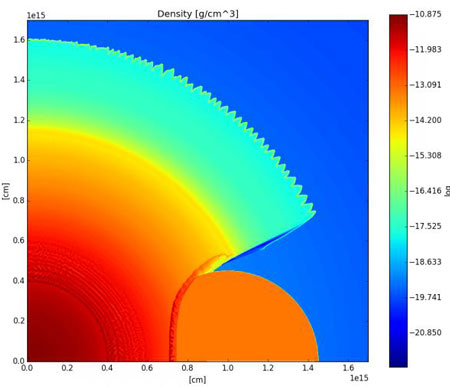 An automated software system played a key role in the discovery of supernova iPTF 14atg and could provide insight, a virtual Rosetta stone, into future supernovae and their underlying physics.
An automated software system played a key role in the discovery of supernova iPTF 14atg and could provide insight, a virtual Rosetta stone, into future supernovae and their underlying physics.
May 22nd, 2015
Read more
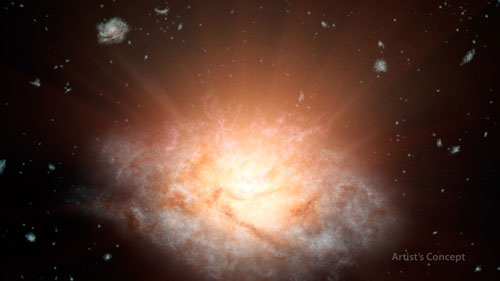 A remote galaxy shining brightly with infrared light equal to more than 300 trillion suns has been discovered using data from NASA's Wide-field Infrared Survey Explorer, or WISE. The galaxy, which belongs to a new class of objects recently discovered by WISE - nicknamed extremely luminous infrared galaxies, or ELIRGs - is the most luminous galaxy found to date.
A remote galaxy shining brightly with infrared light equal to more than 300 trillion suns has been discovered using data from NASA's Wide-field Infrared Survey Explorer, or WISE. The galaxy, which belongs to a new class of objects recently discovered by WISE - nicknamed extremely luminous infrared galaxies, or ELIRGs - is the most luminous galaxy found to date.
May 22nd, 2015
Read more
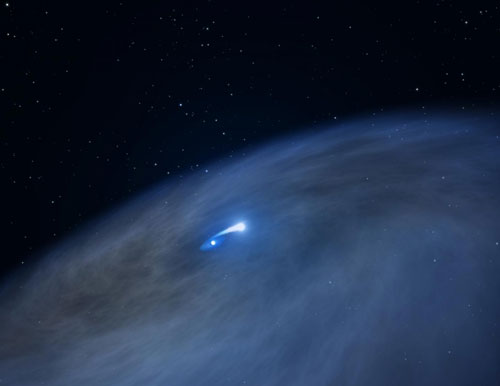 Astronomers using the Hubble Space Telescope have uncovered surprising new clues about a hefty, rapidly aging star whose behavior has never been seen before in our Milky Way galaxy. In fact, the star is so weird that astronomers have nicknamed it 'Nasty 1', a play on its catalog name of NaSt1. The star may represent a brief transitory stage in the evolution of extremely massive stars.
Astronomers using the Hubble Space Telescope have uncovered surprising new clues about a hefty, rapidly aging star whose behavior has never been seen before in our Milky Way galaxy. In fact, the star is so weird that astronomers have nicknamed it 'Nasty 1', a play on its catalog name of NaSt1. The star may represent a brief transitory stage in the evolution of extremely massive stars.
May 22nd, 2015
Read more
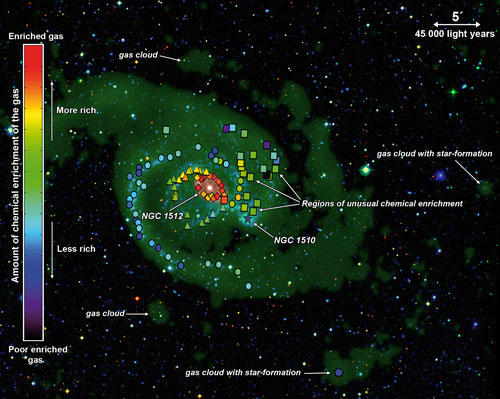 Astronomers have caught a greedy galaxy gobbling on its neighbours and leaving crumbs of evidence about its dietary past.
Astronomers have caught a greedy galaxy gobbling on its neighbours and leaving crumbs of evidence about its dietary past.
May 21st, 2015
Read more
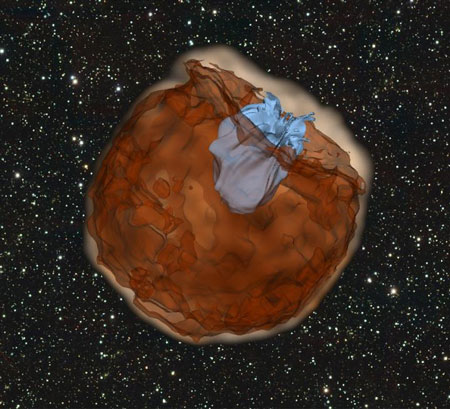 Team of astronomers observes supernova smash into companion star; resulting ultraviolet pulse points to supernova's origin story.
Team of astronomers observes supernova smash into companion star; resulting ultraviolet pulse points to supernova's origin story.
May 20th, 2015
Read more
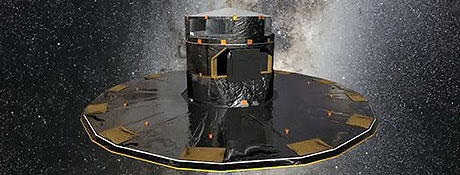 Scientists discover dozens of small celestial bodies every night.
Scientists discover dozens of small celestial bodies every night.
May 20th, 2015
Read more
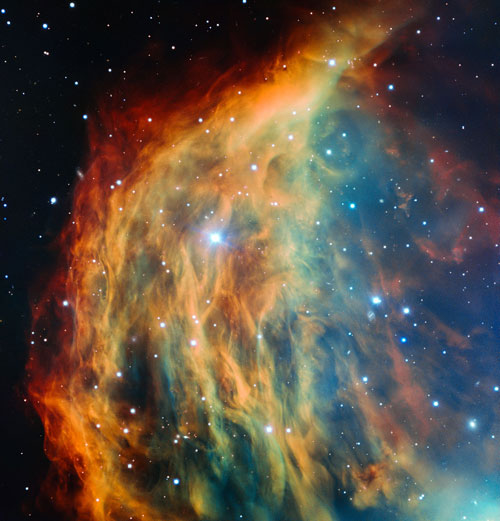 This beautiful planetary nebula is named after a dreadful creature from Greek mythology -- the Gorgon Medusa. It is also known as Sharpless 2-274 and is located in the constellation of [Gemini] (The Twins). The Medusa Nebula spans approximately four light-years and lies at a distance of about 1500 light-years. Despite its size it is extremely dim and hard to observe.
This beautiful planetary nebula is named after a dreadful creature from Greek mythology -- the Gorgon Medusa. It is also known as Sharpless 2-274 and is located in the constellation of [Gemini] (The Twins). The Medusa Nebula spans approximately four light-years and lies at a distance of about 1500 light-years. Despite its size it is extremely dim and hard to observe.
May 20th, 2015
Read more
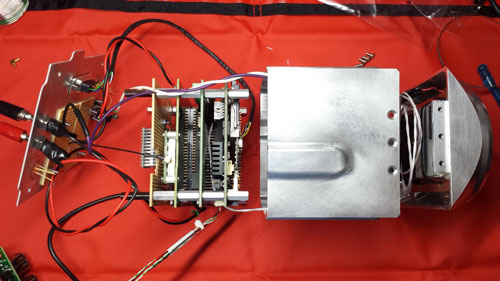 Although scientists are increasingly using pint-size satellites sometimes no larger than a loaf of bread to gather data from low-Earth orbit, they have yet to apply the less-expensive small-satellite technology to observe physical phenomena far from terra firma.
Although scientists are increasingly using pint-size satellites sometimes no larger than a loaf of bread to gather data from low-Earth orbit, they have yet to apply the less-expensive small-satellite technology to observe physical phenomena far from terra firma.
May 20th, 2015
Read more
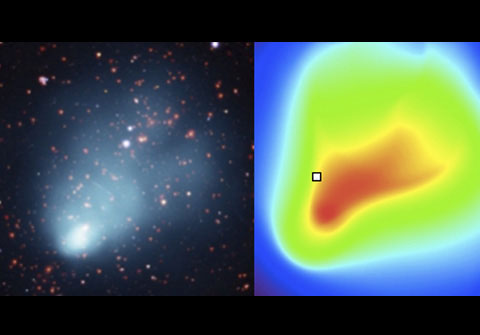 New work challenges the accepted view that dark matter is made up of heavy particles.
New work challenges the accepted view that dark matter is made up of heavy particles.
May 15th, 2015
Read more
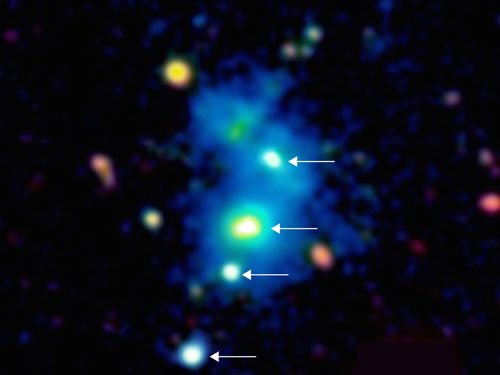 Astronomers must rethink models about the development of large-scale cosmic structures.
Astronomers must rethink models about the development of large-scale cosmic structures.
May 14th, 2015
Read more
 A team of scientists investigated the oxygen isotope and mineral composition of the comet dust returned from Wild 2. In a study published recently, the team discovered an unexpected combination of material that has deepened the mystery of Wild 2's past.
A team of scientists investigated the oxygen isotope and mineral composition of the comet dust returned from Wild 2. In a study published recently, the team discovered an unexpected combination of material that has deepened the mystery of Wild 2's past.
May 14th, 2015
Read more
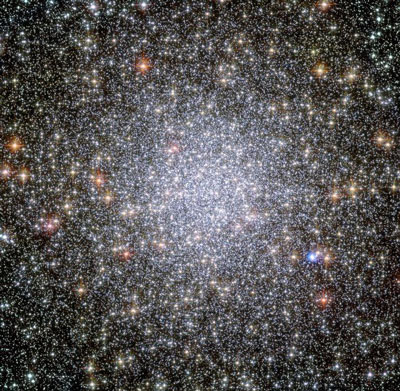 Astronomers using the NASA/ESA Hubble Space Telescope have, for the first time, collected a census of young white dwarf stars beginning their migration from the crowded centre of an ancient star cluster to its less populated outskirts. The new results challenge our ideas about how and when a star loses its mass near the end of its life.
Astronomers using the NASA/ESA Hubble Space Telescope have, for the first time, collected a census of young white dwarf stars beginning their migration from the crowded centre of an ancient star cluster to its less populated outskirts. The new results challenge our ideas about how and when a star loses its mass near the end of its life.
May 14th, 2015
Read more
 Astronomers have discovered a disc of planetary debris surrounding a young sun-like star that shares remarkable similarities with the Kuiper Belt that lies beyond Neptune, and may aid in understanding how our solar system developed.
Astronomers have discovered a disc of planetary debris surrounding a young sun-like star that shares remarkable similarities with the Kuiper Belt that lies beyond Neptune, and may aid in understanding how our solar system developed.
 Subscribe to our Space Exploration News feed
Subscribe to our Space Exploration News feed














